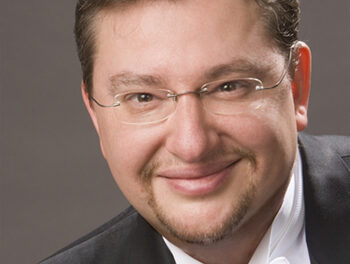For someone who generally prefers full-blown orchestral music over the more intimate side of chamber music, about the smallest ensemble that brings true enjoyment is usually a string quartet. Piano quartets, quintets, small wind ensembles are just fine, but no matter how skillfully composed, music for solo instruments, duos and trios seems somehow, well, just too small; maybe not enough going on.
That was before listening to Ara Gregorian, Colin Carr and Thomas Sauer perform a pair of well-known piano trios by Beethoven and Dvořák at the Four Seasons Chamber Music Festival in A.J. Fletcher Recital Hall on the East Carolina University campus.
For the most recent concert in the festival’s 10th season, festival artistic director Gregorian on violin, Carr on cello and Sauer on piano offered a fine example of chamber music composition for three players, and their performance of Beethoven’s “Archduke” trio (in B-flat, Op. 97) and Dvořák’s “Dumky” trio (in E-minor, Op. 90) shows that the intimate sound of the instrumental trio can be glorious indeed. All three players get the chance to shine individually and as part of a tightly-knit ensemble. In particular, both pieces offer the cellist a frequent starring role, and the warmth of Carr’s playing, including several instances of straight tone bowing, was one of the concert’s highlights.
Dvořák’s trio, which opened the concert, consists of six movements based on dances (a dumka is a dance of Ukrainian origin). Although each section might start with a slower, perhaps more melancholy, melody line, the liveliness of the dance shines through. The second movement, for example, starts poco adagio and ends up vivace non troppo, moving from slow to fast to achingly slow to blisteringly fast.
Dvořák is one of those composers who never wrote a bad note, and this trio is filled with splendid melodies, some of absolutely shimmering beauty. The solo piano line in the third andante-vivace non troppo-andante section is exquisite and received a passionate interpretation from Sauer. Gregorian’s violin turned into a wonderful metronome to open the main theme in the fourth andante moderato movement, but he also drew out an interesting harmony and shared nice pizzicato passages with Carr behind the piano.
Previous commentators have likened the melodies to gypsy dances (one might compare them to Brahms’ Hungarian dances or Dvořák’s Slavonic dances), and the last two movements certainly ended with all the energy of a folk dance.
Beethoven started his trio in honor of Archduke Rudolph 200 years ago, and it since has become a standard of the chamber repertoire. The piece is filled with wonderful melody, not to mention a bit of playfulness, and even a few uncharacteristic, almost contemporary, sounds, and Gregorian, Carr and Sauer gave the piece a terrific reading.
Both the opening allegro moderato movement and the second scherzo: allegro movement begin with familiar themes, especially the stately piano theme in the first movement and the stylish, elegant piano line throughout the second movement, with its lilting three-quarter time rhythm. The second movement also featured a fugue with an odd minor-key ascending line that sounded almost as if Beethoven were experimenting with a new kind of musical progression.
The long andante cantabile movement is a thing of rare beauty, almost hymn-like in its harmonic development, with an especially nice cello-piano duet. At other times, the movement resembled a romantic song, with remarkable trio interplay. In an evening of stellar performance, this might have been the highlight. The piece closes with a sprightly dance and some playful, almost casual, string playing tossed in among more muscular passages.
One thing for certain: there is no place to hide in a piano trio. On occasion, one player has a moment or two of rest; on a rare occasion, two players might pause, albeit briefly. But in these two pieces at least, the score places pretty much non-stop demands on each player. Fortunately, Messrs. Gregorian, Carr and Sauer, who have been partners in previous Four Seasons Chamber Music Festival programs, were completely up to the demands of the score and performed with great skill, letting the music breathe, while never crowding or rushing each other. And at least one audience member now will pay closer attention to chamber music trios than in the past.











